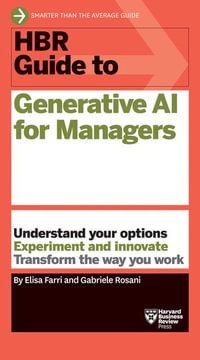
eTEXT
Quick Start Guide to Large Language Models
Strategies and Best Practices for Using ChatGPT and Other LLMs
By: Sinan Ozdemir
eText | 20 September 2023 | Edition Number 1
At a Glance
eText
$75.96
or
Instant online reading in your Booktopia eTextbook Library *
Read online on
Desktop
Tablet
Mobile
Not downloadable to your eReader or an app
Why choose an eTextbook?
Instant Access *
Purchase and read your book immediately
Read Aloud
Listen and follow along as Bookshelf reads to you
Study Tools
Built-in study tools like highlights and more
* eTextbooks are not downloadable to your eReader or an app and can be accessed via web browsers only. You must be connected to the internet and have no technical issues with your device or browser that could prevent the eTextbook from operating.
ISBN: 9780138199302
ISBN-10: 0138199302
Published: 20th September 2023
Format: PDF
Language: English
Publisher: Pearson Technology Group
Edition Number: 1
You Can Find This eBook In
This product is categorised by
- Non-FictionComputing & I.T.Computer ScienceArtificial IntelligenceComputer Vision
- Non-FictionComputing & I.T.Computer ScienceArtificial IntelligenceExpert Systems & Knowledge-Based Systems
- Non-FictionComputing & I.T.Computer ScienceArtificial IntelligenceNatural Language & Machine Translation
- Non-FictionComputing & I.T.Computer Programming & Software DevelopmentProgramming & Scripting Languages























